WingTsun adapts itself to the danger
WingTsun was formerly a method for resistance fighters, but today it is a modern means of self-defence. Grandmaster Dr. Oliver König explains what areas of emphasis beginners should focus on in their training.
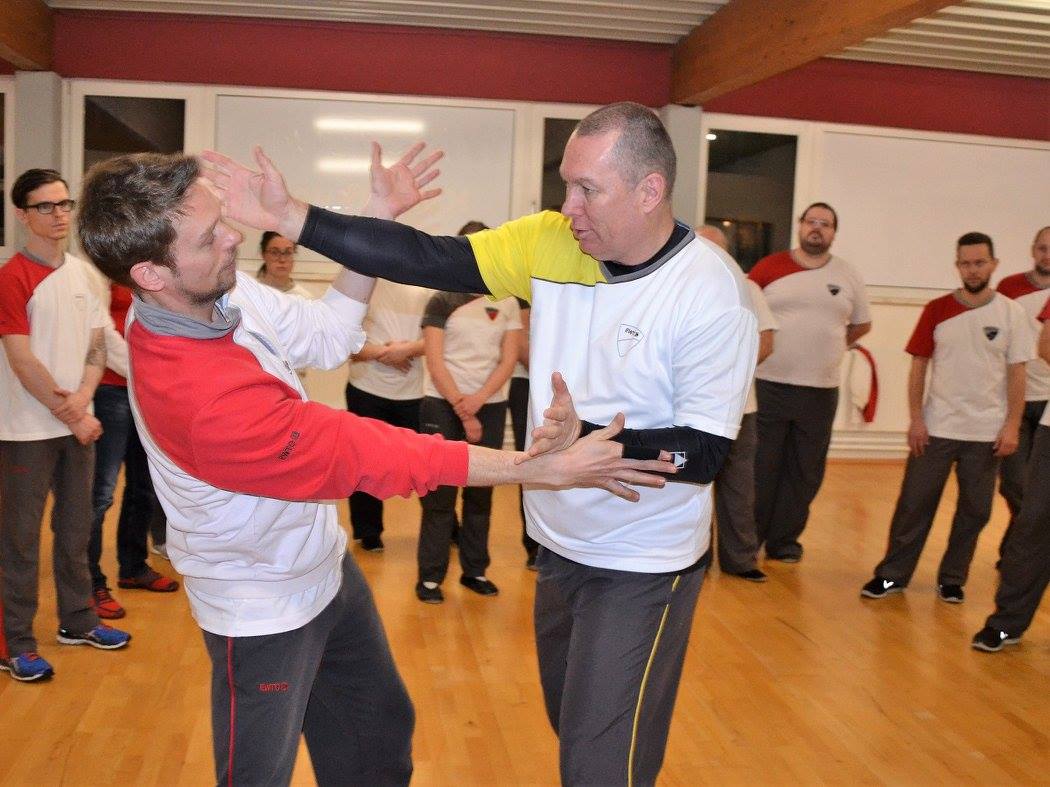 Formerly: Wing Tsun as a method for resistance fighters
Formerly: Wing Tsun as a method for resistance fighters
The history of Wing Tsun goes back to the old China, or more precisely to the Quin Dynasty (1644 - 1911). During this period, secret societies were formed against the ruling class (Manchurians). These used KungFu to attract young people and convince them of their cause, and of course also to use their respective KungFu styles as fighting methods for their freedom fight. First the students had to absolve a long phase as a test of patience and character during which they learned no effective techniques, but mainly practiced forms that at first had many defensive techniques and only a few effective attacks.
This even applied to Wing Tsun (Wing Chun, Ving Tsun). When we look at the SiuNimTau and ChamKiu forms in WingTsun (and the accompanying partner forms), blows are mainly aimed at the ribcage and the elbows are usually brought forward close to the body, so as to cross the arms of the opponent.
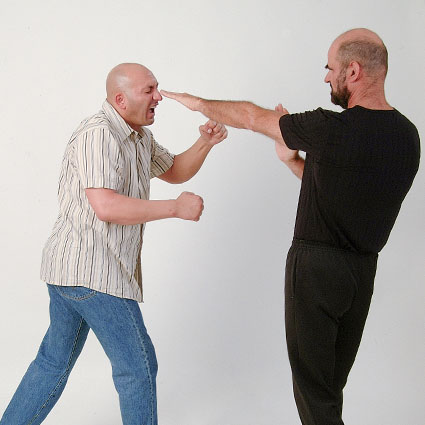 Only the higher forms such as the BiuTze and Wooden Dummy and their applications contain highly effective techniques like chops to the neck, elbow strikes, finger jabs to the eyes, etc.
Only the higher forms such as the BiuTze and Wooden Dummy and their applications contain highly effective techniques like chops to the neck, elbow strikes, finger jabs to the eyes, etc.
Indeed the saying was:
"The BiuTze never leaves the house!"
The ability to fight effectively therefore only came after some considerable time.
Today: WingTsun as a modern means of self-defence
A modern self-defence system has to work in day-to-day life. Both male and female students who start to learn with the EWTO expect the self-defence they have been promised to actually work within a very short time, not only after 10 years.
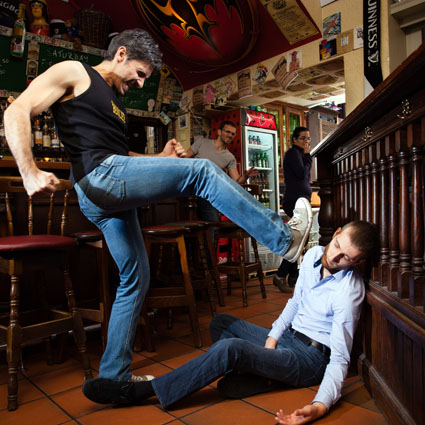
The external parameters have also changed, for example the sexual molestation that occurred in Cologne on New Year's Eve in 2015/16 showed that self-defence situations are now more complex and difficult.
Here are some examples of situations for which much more practice is now required, as they occur much more often in daily life:
- Self-defence against several attackers
- Self-defence and behaviour when threatened with bladed weapons, axes, long poles, etc.
- Use of improvised weapons against attacks with bladed and pointed weapons
- Self-defence against one or more opponents who are kicking a victim lying on the ground.
- etc.
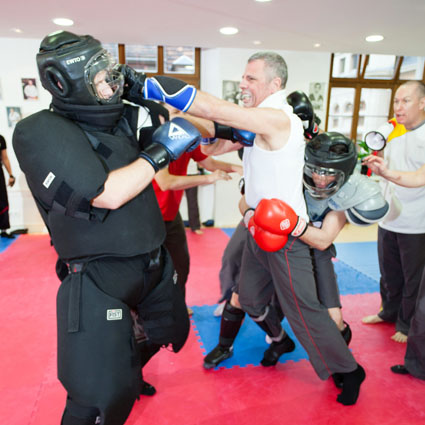
This is why the modern EWTO programmes are structured so that maximum attention is given to the immediate self-defence capability of students.
So at first the main focus is not on precise learning of the forms, which takes valuable time at the expense of self-defence training. Nowadays techniques and situations are practiced that lead to immediate success and rapidly give the student protection on the street.
However, this by no means implies that forms are useless! On the contrary, if they are practiced correctly they lead to improved body mechanics – though this takes longer.
So at first the focus is on self-defence, and the skills are later perfected e.g. by practicing the forms etc.
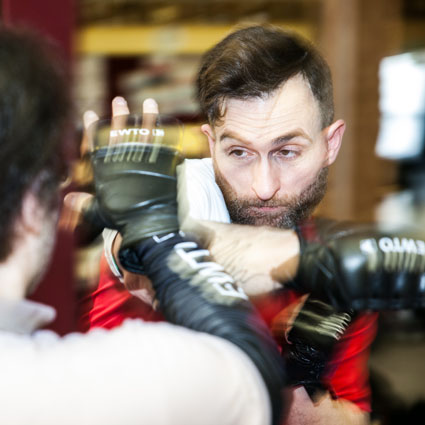
One important aspect for beginners alongside the technical basics (4 Blitz attacks, anti-ambush programme, self-defence on the ground) is punching and kicking drills that quickly give them a certain basic structure, but into which the above content can also be incorporated. The drills not only help to develop better attacks that make WingTsun users a nightmare in self-defence situations, but also gradually accustom them to powerful attacks as they practice.
Pulling and pressure exercises should also be part of this structural training, as they lead to faster results.
The dilemma of those teaching modern WingTsun (master, teacher and instructor):
Effective self-defence versus risk of injury
Unfortunately, an effective and fast self-defence against an often larger and physically stronger opponent is not as easy as laymen imagine. Films, media etc. that often portray the small, petite woman easily twisting the arm of a muscular opponent who is three times as heavy behind his back, whereupon he screams with pain, gives up and shows regret for his behaviour, are completely unrealistic.
The only chance a woman weighing 50 kg has against a 100 kg opponent in a serious situation is to attack vulnerable parts of the body.
This includes:
- Finger jabs and strikes to the neck
- Finger jabs to the eyes
- Palm strike under the chin (neck)
- Knee to the genitalia
- Kicks to the knee (for advanced students, as the balance is on one leg)
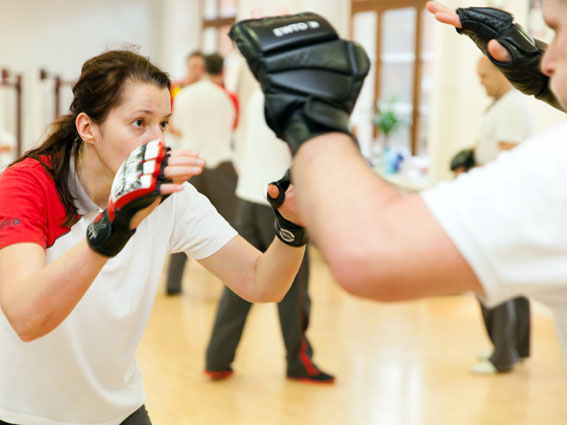
Practicing these techniques naturally brings a high risk of injury, especially when one takes into account that beginners in particular often have poor coordination at first.
The instructor, school-owner, teacher or master must therefore know exactly what he is doing.
Leaving these techniques out would completely compromise the self-defence, and is therefore not an option. We would be giving smaller, weaker students the false impression that they can defend themselves, and therefore render them helpless when confronting an opponent. In a serious situation this would lead to a rude awakening.
This is where the teaching method comes into play, with the following important guidelines for the instructor:
- How can these dangerous techniques be practiced without risk of injury?
Practicing strikes and punches against pads, focus mitts and sandbags can "sharpen the weapons" without injuring a partner.
When practicing with a partner, the blow can then be delivered very lightly and slowly and will do no damage.
- Students must be selected with care:
If the school-owner has the feeling that a prospective student turning up at the EWTO school for an introductory WingTsun conversation wants to misuse WT, he should always refrain from accepting this person as a student.
- If it turns out that a student is not obeying the instructions of the teacher in class, e.g. if he has been instructed to perform a technique slowly but attacks powerfully and recklessly, then the teacher must assert his authority and – if the student still fails to understand – remove him from the class or show him no more techniques of this kind. The good of the community comes before the ego-trip of the individual!
- Explanation: before dangerous techniques are practiced, the students should be told what the relevant attack leads to, and what injury to the opponent can result. The students will then exercise more responsibility when practicing.
From self-defence to a martial art
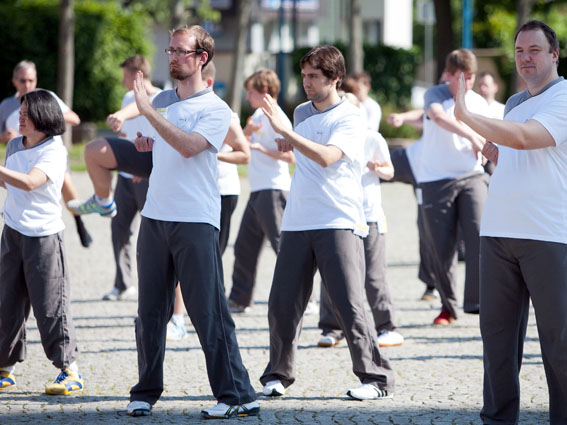
Even though the teaching focus is on self-defence at first, we must not forget the other aspects.
WingTsun offers far more advantages than merely self-defence, and during the course of further WingTsun training it develops many other capabilities such as tactile responses, coping with the opponent's strength, improved balance and manipulation of the opponent's balance, greater physical awareness, greater mindfulness, etc. You can read more about the other aspects and focal areas of WingTsun in coming editorials here at WingTsunWorld online.
Photos: aw/EWTO/mg


